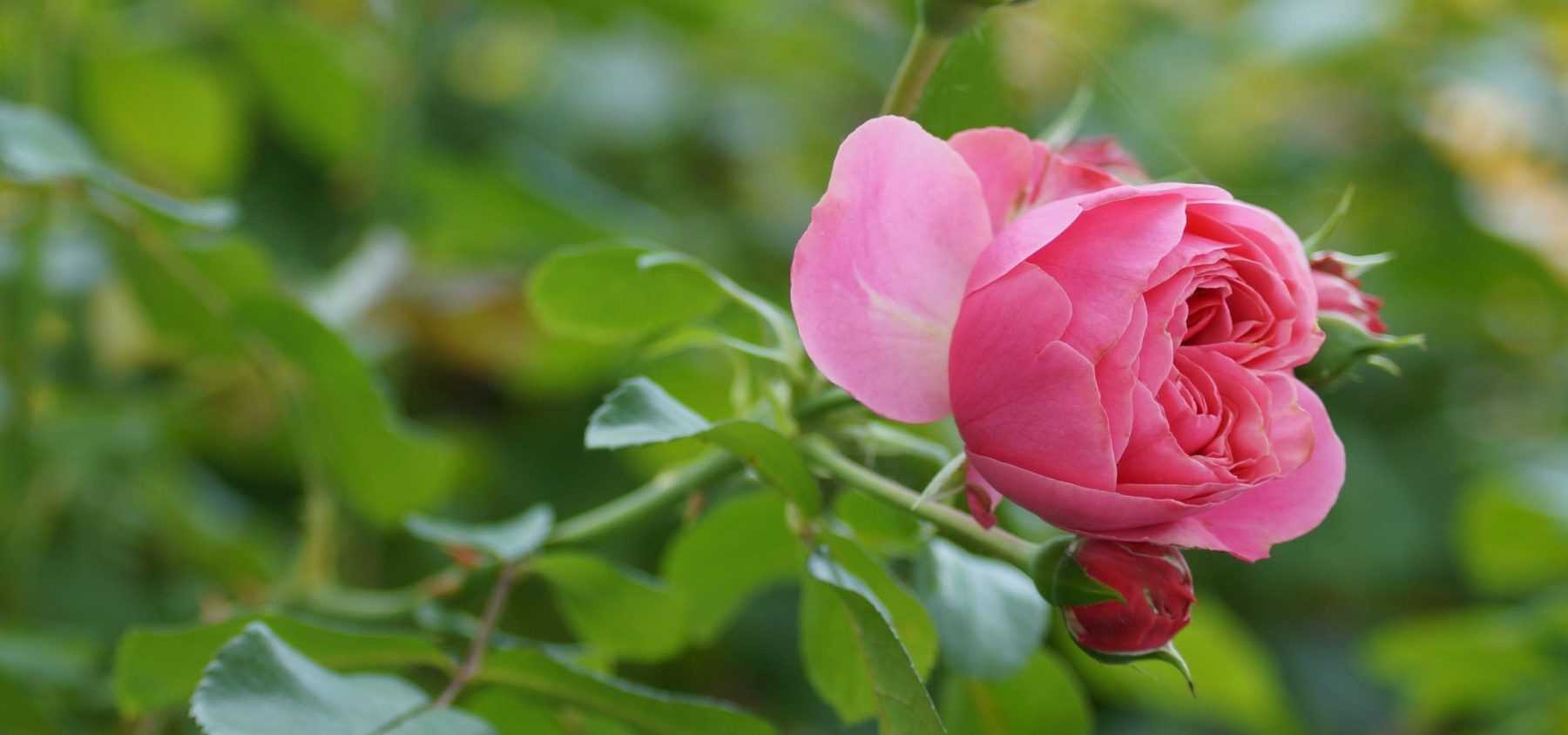
Rose bushes in coiled pouches or bare-root
When and how to plant them?
Contents
With their romantic and very delicate blooms, roses are among the most beloved plants for beautifying gardens. There is an endless variety of cultivars, enchanting us with their single or double flowers, pastel or more vibrant hues, intoxicating or subtle fragrances… They can be sold potted, but also bare-root (or in peat-packed sleeves: the roots are protected by peat to prevent them from drying out). Bare-root roses are available from November to March, during their dormant period. This packaging has the advantage of being more economical (the rose will cost much less) and promotes quick and deep rooting. To ensure your bare-root rose establishes well, discover all our tips on when, where, and how to plant it!
When to plant a bare-root rose?
Bare-root or peat-packed roses are typically lifted in October to be available for sale. The best planting period runs from November through to the end of March, during the dormant season. It’s important to choose a time when the ground is neither frozen nor waterlogged. Avoid periods of hard frost or extreme cold, which may hinder the plants’ establishment.
If you can’t plant them straight away, you can heel them in temporarily. To do this, dig a 30 cm deep trench in a shaded, sheltered spot. Place the roses at an angle in the trench and cover them with soil, ensuring the roots are well filled in to avoid air pockets. Water lightly if the soil is dry. They can remain like this for 3 to 4 days before final planting.
Where to plant your rose bush?
Roses thrive in a sunny location, sheltered from strong winds, to encourage their flowering and growth. The ideal is to plant them in rich, well-drained soil that is slightly acidic to neutral. Avoid areas where water stagnates, as rose roots dislike excess moisture. If the soil is too heavy or clayey, you can lighten it with coarse sand or compost to improve drainage. Finally, space your plants at least 50 cm to 1 m apart, depending on the variety, to give them enough room to flourish fully.
How to plant a bare-root rose?
To plant a bare-root rose, follow these steps:
- Prepare your soil to a depth of about 40 cm and a width of 30 cm to aerate it well. Loosen the soil by breaking it up finely and add an organic amendment such as ground horn or dried blood, rich in nutrients, to encourage establishment. Then, form a small mound of soil at the bottom of the hole to place the roots on.
- Next, proceed with puddling: prepare a thick mud mixture by combining soil and water. Carefully unwrap your rose, then spread out the roots if they are folded in the packaging. Dip them into the bucket of mud to coat them thoroughly. This process helps protect the roots and improves establishment.
- Place the rose in the planting hole, spreading the roots over the mound of soil you created. Check the depth: the graft union (where the branches meet the trunk) should sit slightly above ground level.
- Gradually fill the hole with the removed soil, gently firming it as you go to ensure the roots are well surrounded without air pockets. Take care not to bury the graft union.
- If needed, prune the branches of your rose to about 15–20 cm in height to encourage establishment and good branching.
- Create a basin around the base of your rose to direct water towards the roots, then water thoroughly. This helps the soil adhere properly to the roots and removes air pockets.
- In regions with harsh winters, you can protect your roses by applying mulch around the base to a height of about 20 cm. Dead leaves, straw, or compost can help insulate the roots from the cold.
How to care for your rose bush?
Watering
Roses require regular watering, especially during their first year and in dry periods. Water at the base, avoiding wetting the foliage to prevent diseases, and prefer watering in the morning or evening. Ensure the soil remains slightly moist but not waterlogged.
We recommend applying a layer of organic mulch around the base of your roses (straw, bark, dead leaves, etc.), as this helps retain soil moisture, suppresses weeds, and protects roots from temperature fluctuations.
Fertilisation
Enrich the soil in spring with compost or a rose-specific fertiliser, high in potassium, to encourage flowering. A second feed can be applied after the first bloom to support new flower development.
Pruning
- In August: Prune non-reblooming (once-flowering) roses to prepare them for the following year.
- In autumn (after the first frosts): Lightly prune recently bloomed roses, removing spent flowers and shaping the plant. Maintenance pruning can also be done—remove old, dead, or crossing branches to improve airflow and prevent disease. Keep 3 to 7 strong young branches to structure the rose.
- In February/March: The main pruning takes place at winter’s end, before new growth begins and after severe frost risks have passed. Cut young stems back hard, leaving only 3 to 5 buds per stem. This stimulates new growth and abundant flowering. Make angled cuts just above an outward-facing bud to promote balanced growth.
Avoid pruning dwarf roses before they are 3 or 4 years old, as early pruning may hinder their development.
For climbing roses, deadhead spent flowers during the blooming season to encourage reblooming. After flowering, remove dead or weak branches. To control growth, train main stems onto supports with careful pruning.
Discover our expert guide on pruning roses.
Diseases and Pests
Roses may be affected by diseases like powdery mildew or rust, as well as pests such as aphids. Monitor foliage regularly and treat promptly with appropriate methods, preferably organic solutions like black soap or Bordeaux mixture. Remove infected leaves to prevent spread.
Learn more in our rose disease guide.
- Subscribe!
- Contents

































